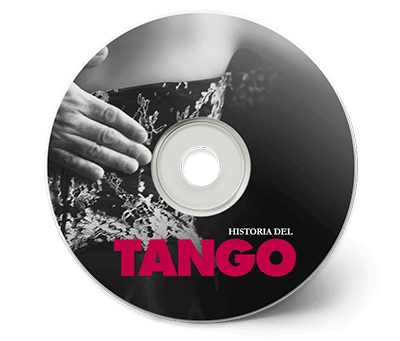
Since it was written in 1980, Astor Piazzolla's four-part Histoire du Tango has become an increasingly popular choice for duos-it was composed for guitar and flute, but it has also been performed and recorded in other combinations, including guitar and violin (I like the Pablo Villegas-Augustin Hadelich version from 2013), accordion or bandoneon and violin, piano and concertina, flute and harp, and so on. But leave it to the great Berta Rojas, a sublime interpreter of music from her native Paraguay and neighboring Argentina, to spearhead a unique, dramatic, and ultimately brilliant reimagining of this modern masterwork.
Her twist was to enlist arranger Carlos Franzetti to create lush but tasteful chamber-orchestra settings for the four movements, and to have Rojas' always-present and dominant guitar accompanied by Camerata Bariloche, Buenos Aires' storied 17-piece ensemble, directed by Freddy Varela Montero and conducted by Popi Spatocco (who also produced the recording earlier in 2015 in Argentina's capital). Former Piazzolla associate Néstor Marconi also contributes some marvelously atmospheric bandoneon work.
Those familiar with the piece know that the four parts follow the evolution and history of the tango, from its roots as a sensual "people's" dance music beginning in the early 1880s ("Bordello 1900"); to its legitimization as a mainstream art form and concert attraction played by small tango ensembles ("Café 1930"); its worldwide popularization and melding with jazz, bossa nova, and other styles ("Night Club 1960"); and the tango's absorption of modern classical and other influences ("Concert d'aujourd'hui"). This is hardly simple, smoldering, "commercial" tango, but rather a rich and varied rhythmic landscape full of surprises, skillfully navigated by Rojas and the orchestra.
Beyond that centerpiece, Rojas and Camerata Bariloche serve up seven other pieces by Argentine composers and songwriters, including several well-known works (at least in South America), such as Carlos Gardel's "Por una Cabeza" and "El Día Que Me Quieras" (both popular vocal tunes), Mariano Mores' "Taquito Militar," Anibal Troilo's "Sur," and Piazzolla's splendid "Oblivion."
All in all, it's a lively, creative, and altogether brilliant excursion into the world of tangos, milongas, and Argentinian popular music. Just as Rojas turned out to be a definitive interpreter on Barrios (Intimate Barrios), she can now add Piazzolla and tango repertoire to her impressive list of conquests.